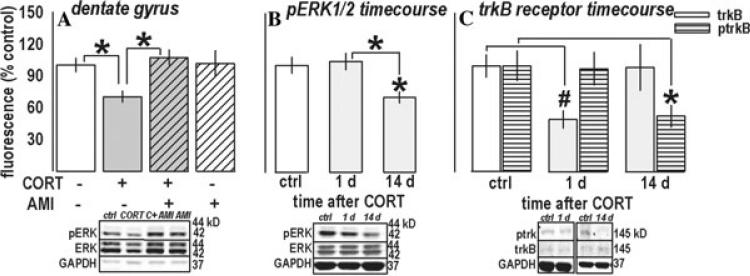Figure 3.
CORT chronically regulates pERK1/2 in the dentate gyrus: Reversal by AMI. (A) Prior CORT and subsequent ADT regulated pERK1/2 in a manner consistent with behavioral responding after these compounds: CORT decreased pERK1/2 in this region (but not in the surrounding CA1/CA3 region, not shown), which has been previously implicated in ADT efficacy in otherwise naïve rodents. The decrease was restored to control levels by AMI, which had no effects alone. (B) A timecourse analysis of pERK1/2 after CORT revealed significantly decreased pERK1/2 14 days after exposure. (C) While trkB receptor expression was regulated on a different timecourse, receptor phosphorylation was regulated on the same timecourse, suggesting decreased trkB receptor activity contributed, at least in part, to decreased pERK1/2. Bars represent means (±SEM) per treatment group (*P ≤ 0.05, compared to control samples unless noted; #P < 0.05 in a t-test against same-day and all control samples). “C + AMI” refers to the CORT + AMI group. Reprinted with permission Reference 4.

